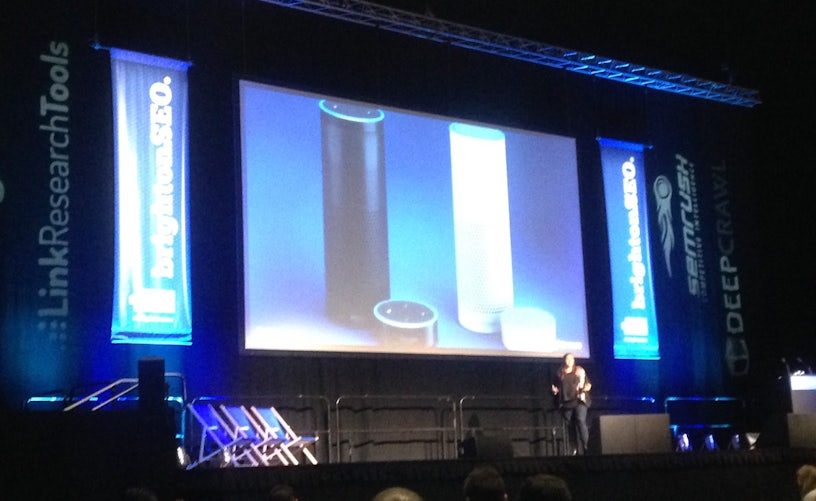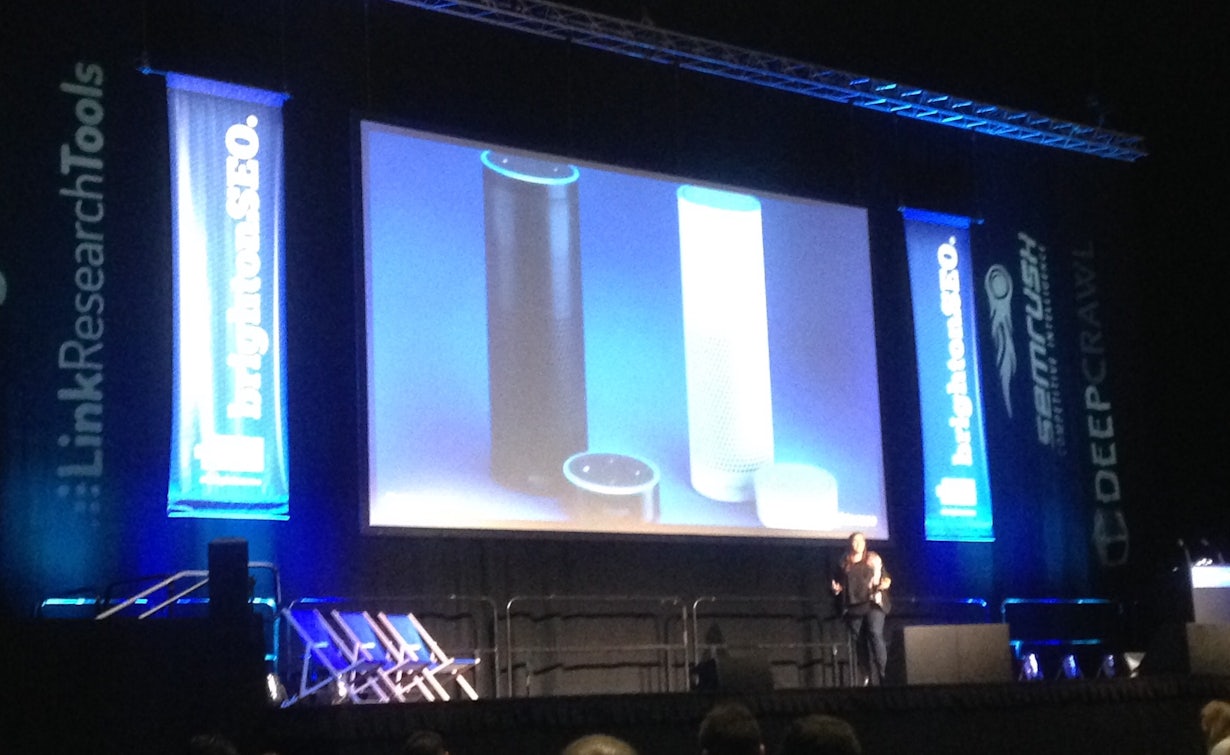The search landscape is changing. Stacey tells us that 50% of searches will be voice by 2020. And the search engines we use are changing; many searches now start on Amazon instead of Google.

Hummingbird was the thing that made Stacey sit up and take note. This was all about joining the dots for users.
So how does this change what we’re doing?
In 2009, keyword research was a spreadsheet. In 2017, a keyword analysis document is more like an audience research document, where we understand the audience much more. At the same time, the breadth of keywords is continually expanding, and search continues to drive sales.
Stay away from tools… for now
The output of a tool is limited by the quality of what you put in. So the first thing we need to do is think beyond driving an immediate sale.
We can get more out of our organic traffic than revenue. We can get links, when we create great content. We can drive awareness.
Split keyword research into:
- Top of the funnel (not shopping yet)
- Mid to bottom of the funnel
- Those who aren’t thinking about your product at all
Top of the funnel
We need to identify the triggers that get our audience to need our product/service. Use a survey, incentivised if possible, of your audience. Do the same with your sales and customer service teams.
This is where we can then use the tool. Take the common triggers and then put them into a tool like Soovle.com to see how people search.
- Toolfeast
- Buzzsumo Question Analyzer
- Answer the Public
- Soovle.com
So back in 2009, you might have researched ‘washing machine’ but knowing the trigger points, you might research ‘washing machine won’t’ and create content around that. This feeds into creating audiences for remarketing.
Mid to bottom of the funnel
Start by auditing keywords that already drive traffic. Search Console is great for that – DeepCrawl now integrates with SC.
Tools to help include:
- KeywordFinder.com
- Amazon – for products, take the information from the FAQs
- Check out competitor reviews for services – filter for 5 star, get all that content, remove common occurrences like the review site name, and then pop the rest of it into Wordclouds.com or something similar. Then you can pick out the words people tended to use in the 5 star reviews and incorporate those into your keyword strategy – experiment with using these words in AdWords ads and page titles for CTR
Keyword research for linkers and amplifiers
Look at the things people tend to search for, like journalists – so things like ‘statistics about’, ‘how many…’, ‘how much…’. All it takes is a handful of people passively coming across this content to get some new links without too much work.
This is a great way to drive links; Stacey particularly likes things around statistics.
Check rankings – even in 2017!
Yes, personalisation and localisation changes results, but as long as our keyword tracking tools are showing us pretty green arrows that correlate with increased traffic and sales, it’s all good!
- Accuranker (get a discount on this tool thanks to Stacey here)
- Search Console impressions and clicks
- Landing page traffic and conversions
- Assisted conversions (when you’re going for people before they start shopping)
Keyword research isn’t a one time job
Always review your strategy.
Look for new opportunities constantly.



